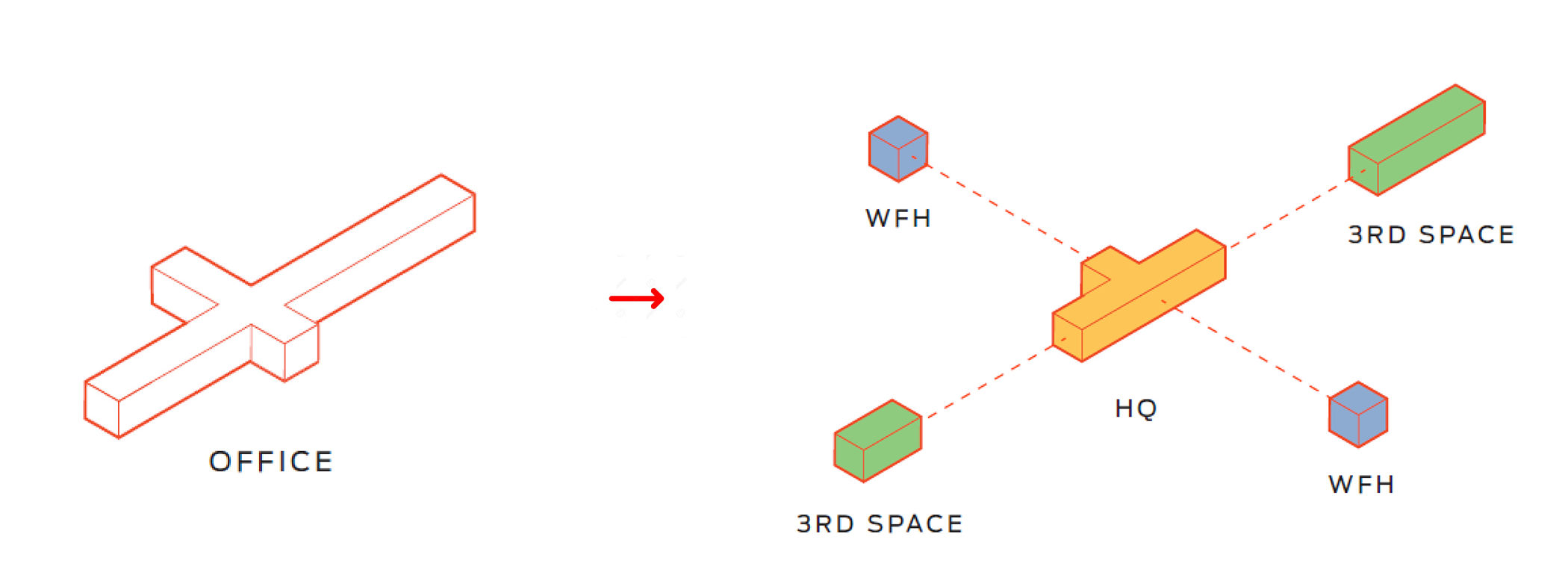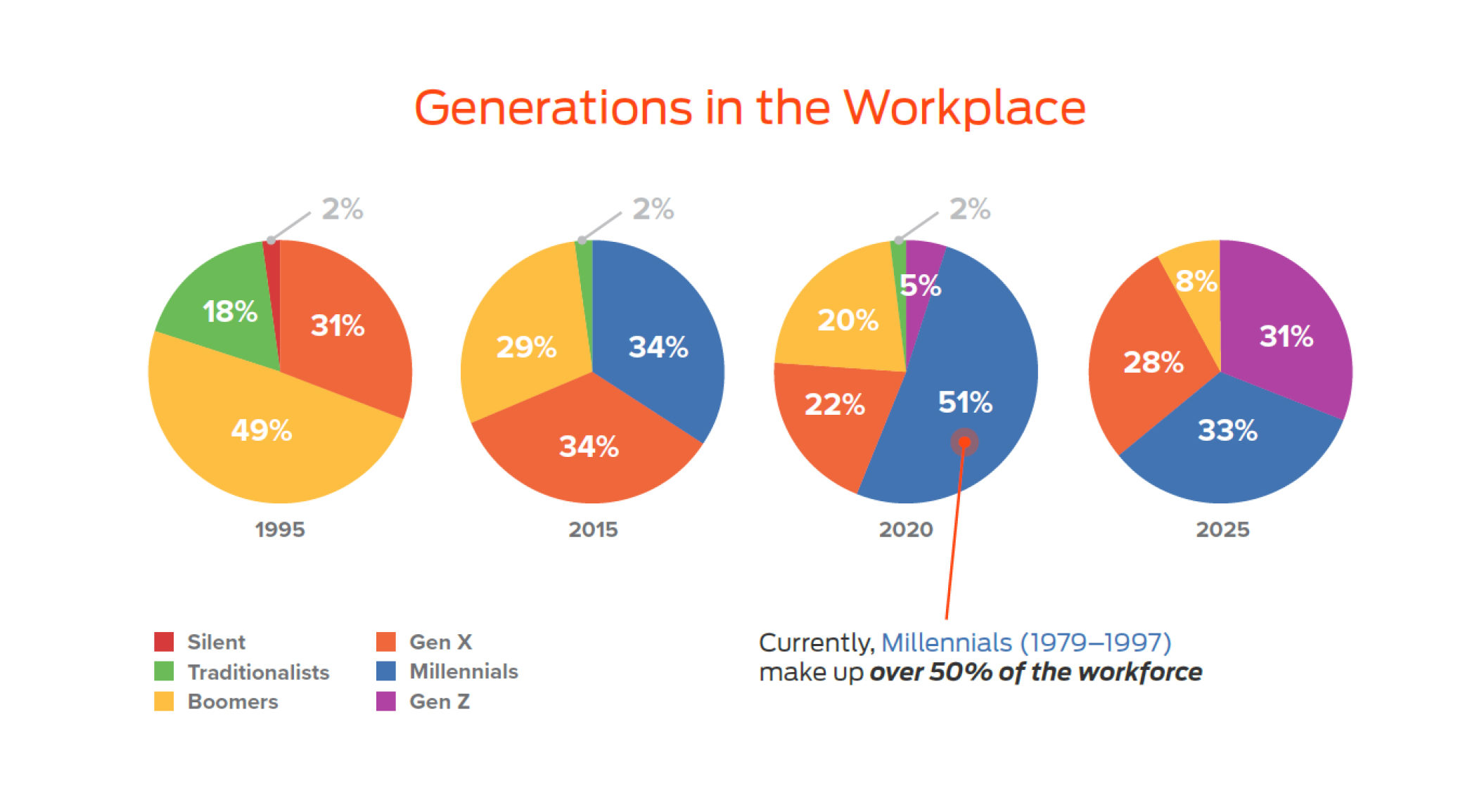You Deserve (a flexible) Environment that Works
The workplace revolution will last. FLEX addresses 5 ways to keep up.

- FLEX isn’t an original idea, but it’s a powerful one that can transform company culture, create efficiencies, increase productivity, and save money.
- Let’s get out of the pinball game of home to work, work to home, and back again. Let’s start to think about the 3rd place in our lives that helps us focus less on where we do work and more on doing it.
- Truly FLEXible work arrangements can save companies up to 30% over five years on leases, renovations, and depreciating assets.
- Truly FLEXible work arrangements improve employee satisfaction and job retention.
- Truly FLEXible work arrangements increase productivity and provide optimal work/life balance.
We’ve heard too much about the future of work.
We’re ready to talk about the future of productivity.
Are you?
LET’S GET IN TOUCH.
Culture Shift
With Millennials making up the majority of today’s workforce and Gen Z making their entrance, tomorrow’s workforce is demanding flexibility, support, and transparency from their employers.
In 2020, we experienced a rapid change in workplace extremes — 100% in the office to 100% working from home. As companies look to regain their balance, our designers have analyzed how to optimize for future flexibility, health and safety, productivity, employee satisfaction, and overall cost savings.
As architects, we are acutely attuned to how culture drives change. As an organization, company culture encompasses our environment, standards, relationships and communication. Because it touches every part of a business, company culture drives a business’s bottom line.

Typologies Explode
What we know for certain: the old typology of everyone working from one singular hub has been disrupted.
Each workplace, whether it’s your home office or a Class-A building downtown, is a design challenge. But, by focusing on the work, we can reinvent the workplaces of our lives — flexible solutions that work for an individual’s needs, not the needs of a faceless and generic “worker.”
The future of work requires all spaces to flex and function together as a comprehensive unit.
With more than 50 years of designing innovative, functional workspaces, recently recognized in WorkDesign Magazine’s 2021 Next Work Environment Competition, our team has the expertise to guide our clients into a bright, productive future.
HQ
The FLEX model transforms a typical headquarters into a destination space that supports collaboration and provides access to specialty technology and equipment.
OVERALL REDUCED FOOTPRINT
With remote and 3rd spaces as permanent additions, the quantity of private offices and assigned workstations can be greatly reduced. Organizations can save on real estate costs by leaning on external workplaces to supplement the HQ.
REALLOCATION OF SPACE
Since most will utilize their home office for focused, heads-down work, HQ should feature an efficient hoteling model and plenty of collaboration space to allow teams to connect in-person temporarily when needed. It is also important that HQ be able to flex with mobile furniture, space and technology for functions that require large gatherings, such as All-Hands meetings or holiday parties.


WFH
This remote workspace can be customized to each individual’s preference and personal workflow. While working from home, employees may pursue a more flexible schedule and improved work-life balance. From considerations such as personality type, religious practices, and medical needs, WFH allows the ability to meet both personal and professional goals. These benefits increase employee retention and job satisfaction.
With reduced real estate costs allocated to HQ, business may provide a stipend to help employees create the perfect WFH space.




3rd Spaces
The future of working, learning, and living are intertwined. Organizations will begin to expand their borders and connect to new markets by renting spaces in various locations.
SATELLITE OFFICES
Companies may opt out to utilize a variety of smaller, specialized office locations throughout the same city. In addition to affordable real estate, these locations are more accessible for employees in suburban neighborhoods.
COWORKING SPACES
These spaces offer flexibility, reduced risk, and benefits such as childcare, dining, entertainment, community, and more.
RETAIL, COMMUNITY, & EDUCATION SPACES
Coffee shops, libraries, and parks provide public workspaces and resources without cost to employers. Public-private partnerships may be another mutually-beneficial channel to pursue.



As we create new environments for the workforce, we must address health & safety, technology, and communication in each space to harness the benefits of each into a cohesive, flexible solution. Our teams are ready to chat about what this means for you.
“… Sounds Expensive”
Let’s let the numbers talk.
With the cost savings from downsizing headquarters, a reduced turnover rate and higher productivity output by accommodating employee needs, companies can save up to 30% over five years.
Transitioning to a FLEX model is not only attainable but integral to retaining a motivated workforce and remaining at the forefront of your industry.
Still, we know every company is unique and we are not a one-size-fits-all type of firm. As partners, we will learn your company culture, lay out your current assets, and walk through how the FLEX model can work for you.



